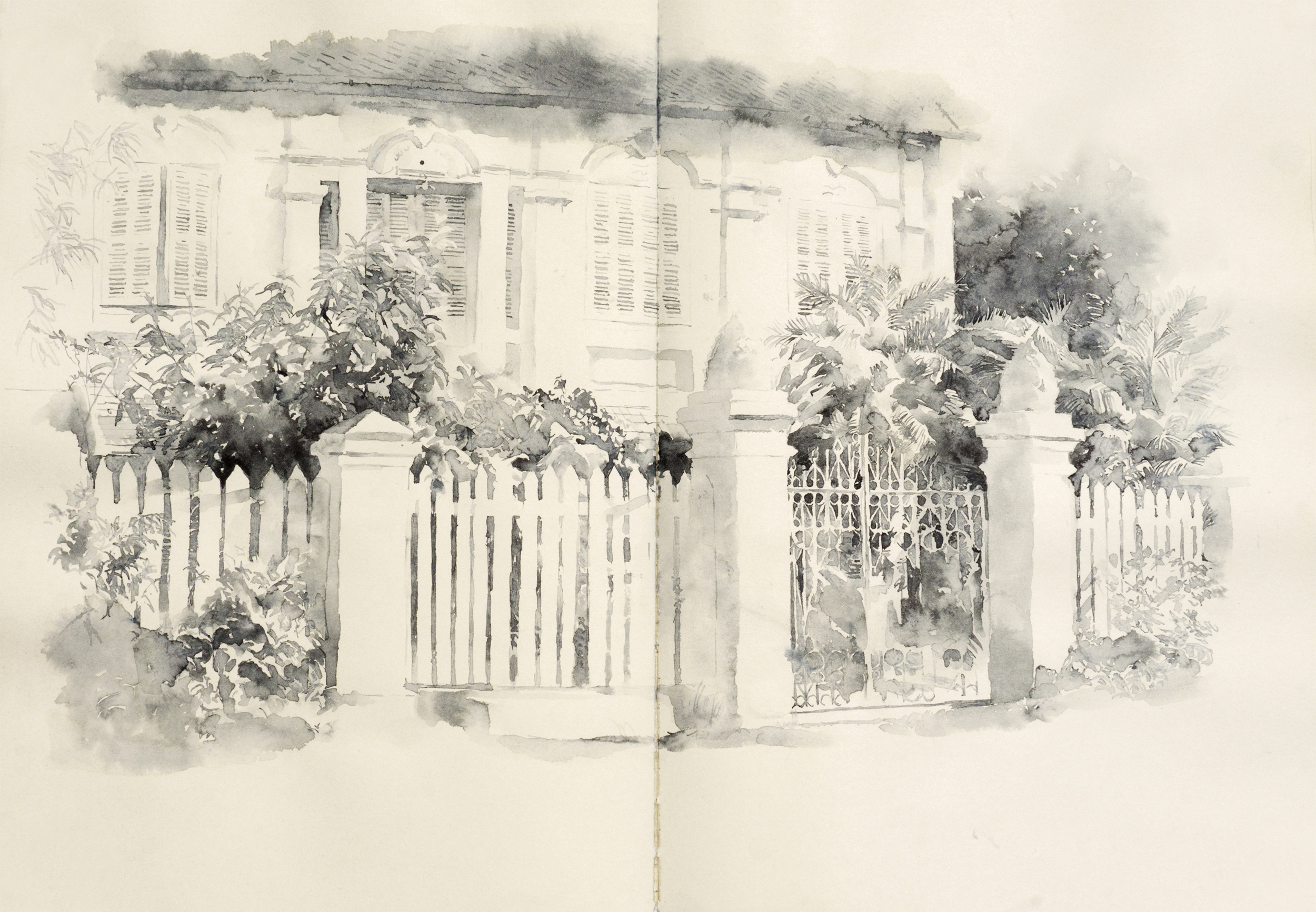In the grounds of Wat Chumkhong at the top of Kounxoua Street. I lost control of this drawing but kept going without caring how it turned out. Sometimes the process is worth more than the result.
KounXoua Street
Luang Prabang is known for the diversity and richness of its architectural heritage. While most of the town’s older buildings are still standing many have been converted to serve tourism. Old houses make great hotels.
But in the centre of Luang Prabang’s designated Heritage Area, Kounxoua Street still reflects the town’s architectural and cultural heritage.
A grand house built in the colonial era stands opposite a row of old shophouses alongside traditional wooden houses – mostly occupied by families that have lived in them for decades.
Though there are a few guesthouses and cafes, to me, Kounxoua Street embodies the as yet ungentrified Luang Prabang.
But tourism drives the economy here and the railway line connecting China to Singapore is heading this way. So while the older people living along Kounxoua Street may not want to move, in the future, younger members of their families could well be tempted by the large sums offered for old houses that are beyond their means to renovate, and the neighbourhood will no doubt change. Which is one reason why I am drawing it now.
Han's roadside bike repair shop
Started drawing roadside shops - this one of a local bike repair shop. A simple shack attached to a house - a jumble of stripped down mopeds, mechanics, tools and the oily remnants of previous repair jobs - owned by Vietnamese mechanic , Han.
Finally the first post
A few pages from a sketchbook, drawn from outside a cafe in Luang Prabang













